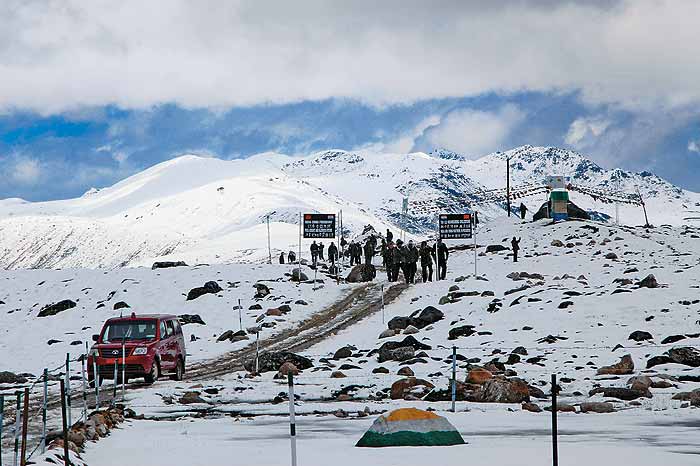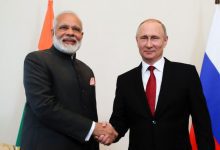What has added to India’s anxiety is that the report quotes a Chinese academician at the University of Geosciences in Beijing as saying that Chinese troops had to retreat from Arunachal in 1962 because “we had no people there to hold the land.” But now, with the ‘significant increase’ in the Chinese population in the Himalayas, there would be stable, long-term support for any military operation aimed at gradually driving out the Indian forces from Arunachal. A report, for Different Truths.
A Hong Kong-based English daily reported last week that the Chinese are digging for gold and other minerals at Lhunze, which is right on the border of Arunachal Pradesh that the Chinese call ‘South Tibet’. Nobody can object to the Chinese prospecting for minerals in their own land. But what is a matter of immediate concern for India is that development of infrastructure etc. is taking place at a breakneck speed at Lhunze, which is a garrison town of the Chinese People’s Liberation Army.
That gold is available in the waters of some of the rivers of Arunachal like Noa-Dihing was known as far back as 1881. But the amount was so infinitesimal that it could not be commercially exploited. Whether the gold struck by the Chinese on their side is sufficient to be commercially exploited is not known.
What has added to India’s anxiety is that the report quotes a Chinese academician at the University of Geosciences in Beijing as saying that Chinese troops had to retreat from Arunachal in 1962 because “we had no people there to hold the land.” But now, with the ‘significant increase’ in the Chinese population in the Himalayas, there would be stable, long-term support for any military operation aimed at gradually driving out the Indian forces from Arunachal. “This is similar to what has happened in the South China Sea”, the academician explained, where China has backed up its territorial claim by building artificial islands and increasing its naval presence.
Another academician, a researcher in the Institute of Geodesy and Geophysics in the Academy of Sciences in Wuhan, spoke in a similar vein. He said that what China had achieved now in the South China Sea was unthinkable a decade ago and he was sure that the same thing would happen in Arunachal also in the coming years. He quoted President Xi Jinping as saying that “not a single inch of our land will be or can be ceded from China, which definitely includes South Tibet.” Those familiar with Chinese strategic thinking and achieving strategic objectives will agree. For all their protestations of friendship with India, the Chinese will never waiver from the path of attaining their long-term objectives.
This means that though there is not a possibility of the Chinese mounting a military offensive against India in the immediate future, it is very much on the cards at a time and location of China’s own choosing.
There is no doubt that we have been unconscionably remiss in fortifying our borders and improving our road and rail communication along the 4,057 km long Sino-Indian border despite the military humiliation we suffered in 1962. To give an example, during the UPA II regime, it was decided to build border roads in Arunachal, Ladakh, and Uttarakhand. But it is as recently as April 4, that the Minister of State for Railways told Parliament that the Defence Ministry had ‘identified’ four strategic railway lines along the Sino-Indian border. ‘Identified’, at long last! When will the construction begin, pray, and when it will be completed?
The MoS volunteered the information that the lines would be Missiamari-Tenga-Tawang (378 km), Bilaspur-Manali-Leh (498 km), Pasighat-Tezu-Rupai (227 km) and North-Lakhimpur-Bame-Silapathar (249 km); that the Ministry of Defence had ‘provided funds’ to the Railway Ministry “for carrying out final location surveys; and that “the undulating terrain of the young Himalayas and difficult geological conditions are affecting the pace of surveys undertaken.” The MoS did not explain how the Chinese could overcome the same difficulties on their side of the border and build a network of railways and roadways in Tibet.
In 2013, the Manmohan Singh Government took the decision to raise a Mountain Strike Corps (MSC) at a cost of Rs. 64,700 crore, for defending our borders with China. The troops in the Corps were to be trained for crossing the border and taking on the Chinese in Tibet if the need arose. The raising was to be completed within seven years. The new government that came to power the next year initially thought the rising cost was too high and needed to be pruned. Then it was said that the raising of the Corps was going on as scheduled. Last year, the army announced that the raising of the second division of the MSC had just started.
Meanwhile, New Delhi seems to have realised that over-dependence on the United States and its ally Israel for our defence needs will be imprudent. Washington wants us to import all our defence hardware from the Western powers. The dangers inherent in this policy seem to have been realized. India has turned once again to her traditional and all-weather friend Russia. Prime Minister Narendra Modi’s current visit to Russia for an informal summit with President Putin points to that realization. New Delhi’s decision to go ahead with the acquisition of the S-400 Triumf anti-missile system from Russia, overruling Washington’s demur, is a positive indication. In an actual war, dependence on the US is very risky, as was proved during the Kargil war of 1999 when the US withheld supply of some spare parts of naval helicopters urgently needed by the Indian Navy.
In the field of indigenous production of military hardware, however, India is far away from realizing Prime Minister Narendra Modi’s dream of Make in India. One instance will suffice. The Kolkata Class stealth guided missile destroyers have been proudly shown up to have been indigenously built. What is not known to many is that only the vessel has been made indigenously. The wide variety of equipment it is fitted with is all imported. Its main gun is from Italy, the gas turbines are from Ukraine, LR-SAMs are from Israel, and the BrahMos missiles are jointly developed with Russia.
Over the years, China has built a vast defence-industrial complex. We are lagging far behind. We have to redouble our efforts to attain a credible degree of self-dependence in manufacturing military hardware within a definite time-frame.
Barun Das Gupta
©IPA Service
Photo from the Internet





 By
By

